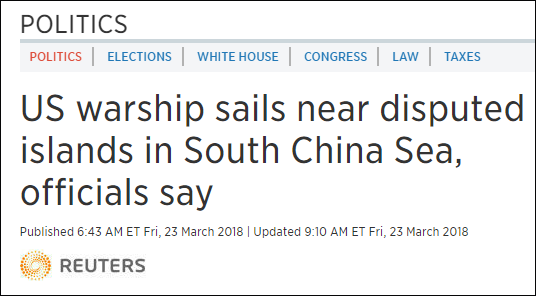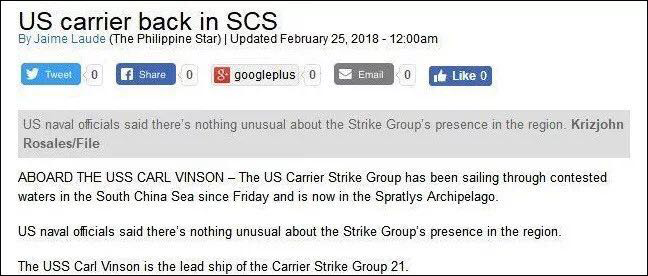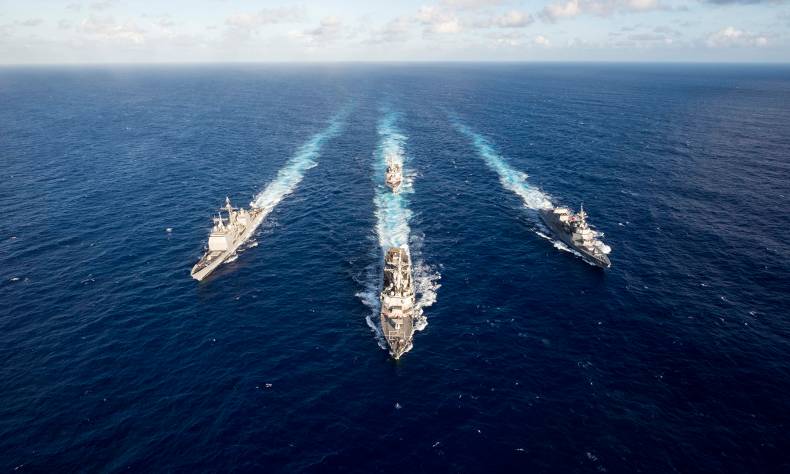
U.S. Aircraft Carriers Provoked China in the South China Sea Again – But Will Only Return Empty-Handed
Following India’s claims regarding China’s “naval threat”, the US. has joined in the farce.
By Li Gang
Following India’s claims regarding China’s “naval threat”, the US. has joined in the farce. A U.S. Navy destroyer, USS Mustin, entered the neighboring waters of relevant islands and reefs of China’s Nansha Qundao on March 23 without the permission of the Chinese government.▼
Reported by Philippine Star on February 25, a U.S. Navy carrier strike group led by USS Carl Vinson left Manila Bay to resume operations in the South China Sea, and was spotted near the Nansha Islands.▼
The situation in the South China Sea has been improving thanks to the concerted efforts of China and ASEAN member states. Under such circumstance, the US, who deliberately stirs up troubles and creates tension in the South China Sea to disrupt peace and stability there, is running against the will of regional countries who aspire for stability, cooperation and development, and thus unpopular at all, a Chinese Foreign Ministry spokesperson said.
While India’s aim was to misrepresent China’s naval activities and create a fuss, the US is building a new stage for new issues.
U.S. Navy Arrives with Great Fanfare While Chinese Celebrate Spring Festival
In fact, the Carl Vinson had already entered the South China Sea as early as February 14. Leading the top Carrier Strike Group of the US Navy, the Carl Vinson has been quite active in the Asia-Pacific in recent years. This aircraft carrier was also the protagonist in last year’s aircraft carrier issue that led to the Korean Peninsula crisis and greatly impaired U.S. president Donald Trump’s prestige.
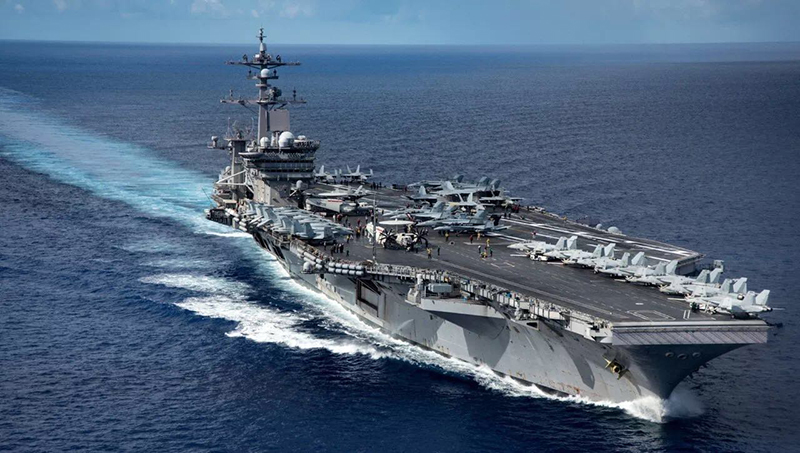
This time, journalists from the US, Singapore, Malaysia, Indonesia and Philippine were specially invited on board the Carl Vinson to turn its grand entrance into a propaganda exercise. In the course of the journalists’ visit, a US naval officer declared that the carrier “has entered the Nansha Islands seas”, indicating that the US intended to combine both hardware and media comment in pursuit of their ends.
Any reasonable person can see that the US sailing its assault warships to the “doorway” of China at the time when the Chinese were celebrating Spring Festival was a deliberate piece of grandstanding intended to create a stir both to China and in the international community. As the BBC saw it, the US was obviously intent on sending a clear message to China.
So What was the Message?
Rear Admiral John Fuller, the commander of the strike group led by Carl Vinson, stated “I think it’s very clear that we are in the South China Sea. We are operating.” “US presence matters.” The US intention behind this carefully planned maneuver was clearly an open announcement to the whole world that even though China is gaining influence in the South China Sea, the US is not ready to quit the game.
Although the US. navy made a great show of sailing its vessels to the Nansha Islands seas, it remained very cautious about any doubts raised about the justification for its action, and had prepared a ready-made set of excuses beforehand.
The spokesperson of the Carl Vinson, Lt. Cmdr. Tim Hawkins, claimed that 90% of world trade will cross the “disputed waters”. In order to guarantee the unimpeded flow of trade, someone must carry out routine patrols at sea, and the reason for the US presence was to guarantee that the sea would remain open. Commander Fuller asserted that the countries along the Pacific coastlines are all maritime states who cherish stability, and this was why the US was there.
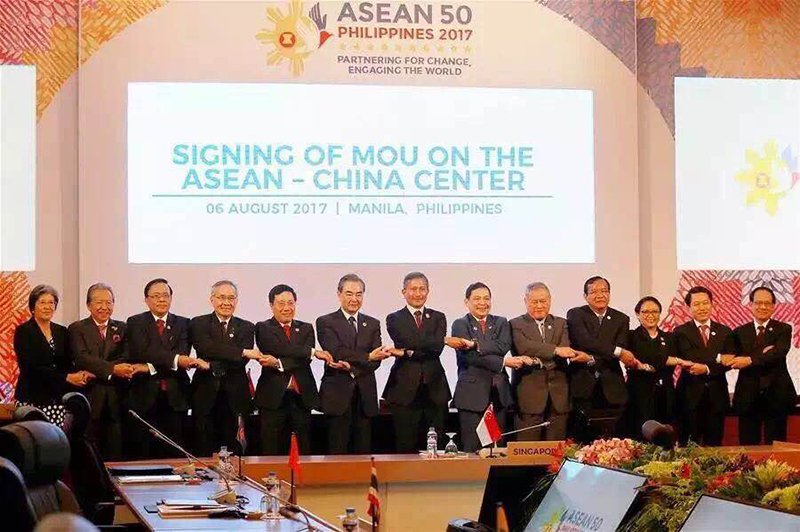
On the face of it the above reasoning seems quite reasonable. But since 2016, the tension in the South China Sea has already eased. On August 5 2017, the 50th Association of Southeast Asian Nations (ASEAN) Foreign Ministers’ meeting officially approved the framework Code of Conduct in the South China Sea. One thing worth noting was that the national leaders of Philippine and Vietnam, the two countries that have the most intense disputes with China over the South China Sea issue, have both visited Beijing. It is reasonable to conclude that the ferocity of the dispute over the South China Sea has considerable reduced. And this is the key issue concerning the US action – now that the countries around the South China Sea, including Philippine and Vietnam, have all quietened down over the issue, the US excuses for interfering in the South China Sea issue and its strategies aimed at undermining China have lost much of their substance.
Against this backdrop, the international community had been given the opportunity to witness the US naval drama. Although their intention is to convey confidence in their dominion over the area, the actual effect is the opposite.
Doomed to Return Empty-handed
As a superpower obsessed with global presence, global reach, and global intervention, the US government’s “national interests” invariably involve interfering in global flashpoints and manipulating the countries involved for its own ends. The South China Sea is a perfect example.
The key intention of the US carrier’s “visit” to the South China Sea was not to display its presence in the region to China, but to entice and coerce other countries in the region to take a stance against China’s position. However, countries in the region have their own considerations, and their responses were not what the US was seeking.
Australia was hesitant. As was reported in the Australian media, when President Trump met Australian Prime Minister Malcolm Turnbull during his visit to Australia, he urged Australia to participate in the so-called “freedom of navigation operation”, and to send a statement concerning international rights in the South China Sea to Beijing. Turnbull’s response to Trump’s proposal was ambiguous.
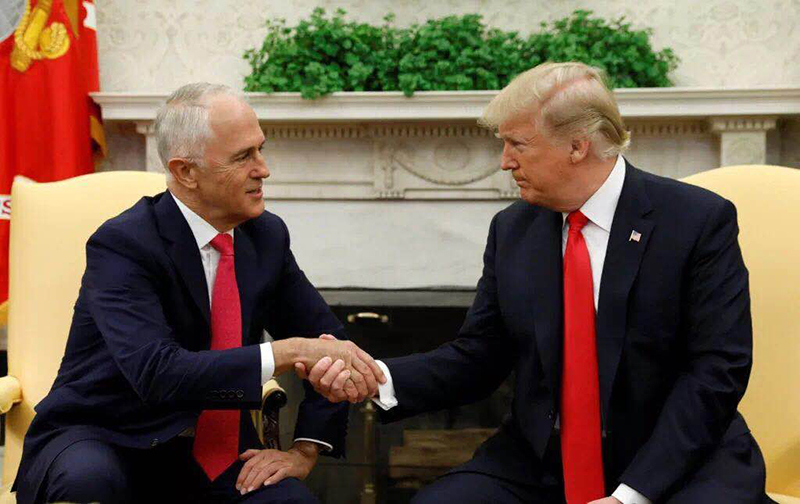
Australian academics thought that Turnbull was very clear: unlike the US, if Australia became involved in the South China Sea issue it might have catastrophic economic consequences, and the military outcome remained opaque. To date, Australia has always avoided participating in this kind of US grandstanding.
Some observers have also pointed out that the personal relationship between Trump and Turnbull is somewhat lukewarm. Hence Trump’s fulsome praise of the US-Australia relationship during his visit showed a clear desire to draw Australia into his camp. That the Carl Vinson launched its voyage to the South China Sea from Australia also left the impression of a “diplomatic sandbagging”.
In addition to Australia, another target participant of the US policy towards the South China Sea is Vietnam, but Vietnam’s stance remains unknown. According to sources, the Carl Vinson will visit the port of Da-Nang in March this year. This seems suggestive of the closest relationship between the US and Vietnam since the end of the Vietnam War in 1975. Winning over Vietnam is one of the key objectives of the visit.
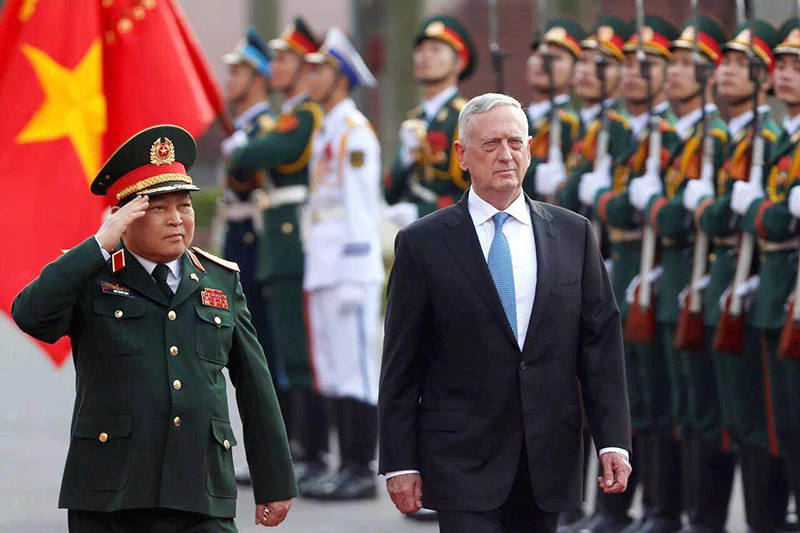
Although a closer relationship between the US and Vietnam has been secured, Vietnam is unlikely to follow the US lead in reviving disputes in the South China Sea. On the one hand, the Belt and Road Initiative proposed by China has given Vietnam a golden chance to promote economic growth. On the other hand, the US interest in Vietnam is largely based on strategic self-interest.
The Philippine response was unequivocal rejection. The Benigno Aquino III regime was a right-hand man for the US in contesting China’s sovereignty over the South China Sea, and it intervened regularly in South China Sea disputes. However, its policies towards the South China have undergone a 180 degree shift since Duterte took office. There has been a rapid improvement in the relationship with China as it seeks to entice Chinese investors. Undoubtedly, Duterte’s policies towards China have greatly benefited the Philippines.
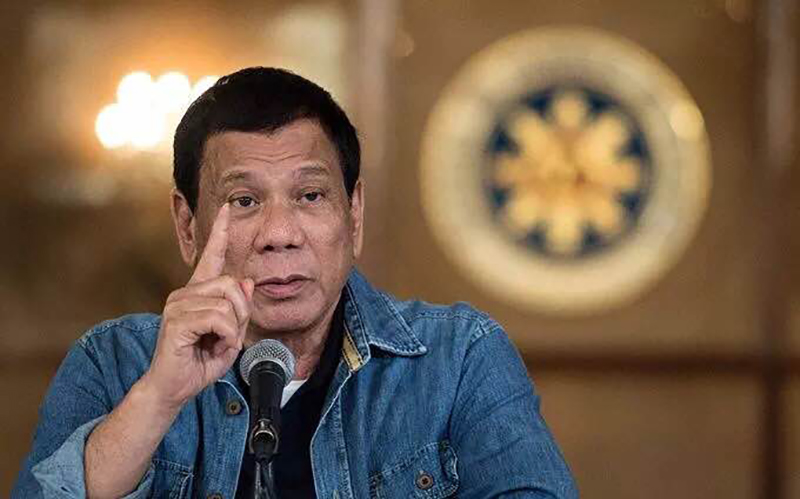
Not so long ago, Duterte emphasized that the Philippines should not be dragged into any conflict between China and the US. Recently, irritated by CIA smears, Duterte called in the US ambassador to ask for an explanation. There is no short-term repair to the growing cracks in the US-Philippine relationship. The absence of lackeys willing to stir up the situation in the South China Sea on its behalf is another reason why the US sent its own aircraft carriers to take to the field.
In general, no one is questioning the freedom of navigation and overflight in the South China Sea at present. On the contrary, the situation here is stabilizing, and countries in the region have no interest in creating disputes. As a result, the US military action under the implausible pretext of “defending freedom of navigation and overflight” is likely to win meager support.
This drama is ultimately a monologue. US provocation will bear scant fruit.
The writer is a columnist with China Focus
The article reflects the author’s opinion, and not necessarily the view of China Focus
Editor: Cai Hairuo
 Facebook
Facebook
 Twitter
Twitter
 Linkedin
Linkedin
 Google +
Google +
